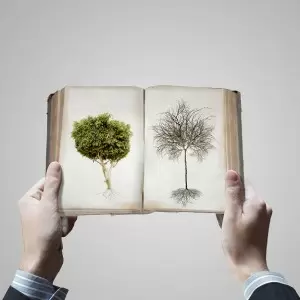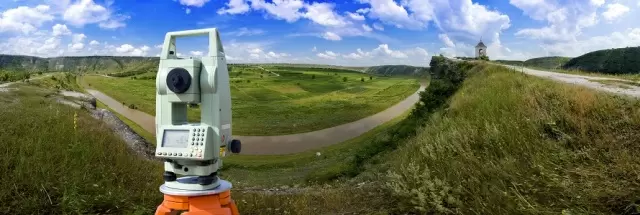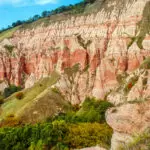
Whether you call it botany, plant science or plant biology, it is one of the world's oldest natural sciences. That means that most colleges and universities will have a botany or plant science degree in their Natural Science or Biology department. Many of the top universities have botany degrees, but there has been a decline in recent years of students taking botany in favour of other environmental and natural sciences. Plant studies will also form part of most biology undergraduate degrees but when moving onto post-graduate study, this becomes increasingly specialised. There are MS degrees in botany at the major universities in most states and botany graduates can enter many fields and with its popularity in decline while still requiring the skills, graduates with a BS should experience little difficulty obtaining employment in their chosen field. Botany graduates enter a diverse range of fields from science communication to agriculture, weed control to soil science, and landscape studies and conservation to teaching biology in our high schools (1). As with most research roles, a Master's Degree is typically expected.
The word “botany”, like many the names of many other scientific studies, comes from Ancient Greek botan�" - a word that has multiple meanings including “pasture” or “fodder”. It includes anything that could be considered a plant, including flowering plants, algae, fungi and vascular plants such as ferns. It generally includes trees (2) but more often than not and increasingly, this is a specialised area. Today, it is part of a wider study of ecology and all the attributes of natural science that that implies (6).
Botany is surprisingly useful in areas we wouldn't automatically consider it to have applications. Many of our early medicines come from plant extracts; aspirin developed as a result of the study of rotting tree bark and penicillin came from mould (3). With the effects of climate change expected to have a profound effect on our the world around us, especially on plants as we rely on them to provide carbon sinks amongst other things, the need to study botany is as important today as it ever was (4).
Learn more about how to become a botanist.
History of Botany
Though the science botany as we understand it today starting out during the period of European colonialism as an area of study by landowners of the plants and trees on their land and the exotic specimens they would bring back from their travels, human interest in plants goes back much further. Arguably, it is the dawn of the Neolithic Revolution some 12,000 years ago and even beyond that when humans sought to identify plants with healing properties, their growing seasons, those that could or could not be eaten, how to selectively breed them for hardiness or larger yields, fruits and vegetables have all been vital to our social development. Even before there was science as we understand it, humanity has studied plants scientifically and it was this knowledge that drive the Agricultural Revolution (5) in developing crops amongst other things.
Civilisation means surplus society, and when we refer to surplus we usually mean crops - through the near Middle East, civilisation spread out and it is mostly due to developing farming methods of the Neolithic. Ancient Greece and Rome were periods of great learning and it is no wonder then that there are prominent figures that drove the science forward as best they could. Aristotle, Theophrastus and Dioscorides were important early figures to plant study and Theophrastus is known as “The Father of Botany” because of two seminal works that were used for the next 1500 years and survive today (6). Nor is study limited to western civilisation, Chinese civilisation made about the same sort of progress as Greek civilisation around the same time and there may have been some trade of knowledge thanks to The Silk Road.
For the next 1500 years, there would be little development and most botanical studies were limited to places of learning such as universities and monasteries. Physic gardens were popular at some of the largest monasteries in the Christian world and these were vital for what limited research went on into the medical attributes of plants - most of this knowledge though was what had been passed on from Greek and Roman civilisation (7).
As with many sciences, the Renaissance and Reformation and the dawn of the Enlightenment opened up plant study. The microscope was invented in the late 16th century which allowed us to study plants like never before (6) - including the smaller parts such as phytoliths and pollen. Not only could we learn about the plants themselves, but also study their reproduction, metabolism and other aspects that had until then, been closed off to us.
Not only were researchers interested in the science, but average people were starting to enjoy plants in themselves rather than purely for functional reasons. Public gardens were founded all over the western world and rich landowners turned over vast tracts of land for parks and gardens (7). When originally opened, most botanic gardens were dedicated to classification, labelling and the trading of seeds. Today, these are vital research centres often tied to universities.
The BSA (Botanical Society of America) was founded in 1893 and though at the time the organisation accepted members from USA and Canada, today it is one of the foremost botanical organisations with members all over the world (8). It is during this century that many other countries established botanical societies thanks to the growing interest in plants and the gaining momentum of Charles Darwin's theory of evolution. Botany has seen resurgence in the last few decades thanks to a growing awareness of the effects of climate change. We may have learnt much about most individual plants but in the coming years they will be vital in teaching us about the ecology of the future (7).
Divisions of Botany
Botany today is such a large and varied area and has many important uses in a wide variety of disciplines, that it has evolved several niches and offshoots. The most notable are as follows, but this list is not exhaustive:
Plant Pathology
It is often tragedy that drives scientific discovery and the Irish Potato Blight of the 19th century is the one period where most advances in research of plant diseases were made - many researchers put their efforts into plant pathology - the reasons should be obvious, if disease wipes out a large proportion of a staple crop then people starve. The Irish 1840s “Potato Famine” drove immigration for a large number of Irish to North America largely because of the disease that had affected the crops they had come to rely on (9). With Potato Blight, the tuber or the roots rot, rendering the whole crop useless. The mass spread of this disease caused one of the greatest famines anywhere in the western world and has never been seen since. Today, plant pathology is still a vital component of botany as we attempt to adapt crops to the changing climate and keep one step ahead of evolving diseases.
An ongoing research problem for plant pathologists is how to tackle the many diseases that threaten bananas. The limited genetic make-up and the seedless nature of modern cultivars means that several types have already gone extinct and several others remain under threat (10). Plant pathology is vital to understanding disease as well as the potential problems caused by climate change.
Plant Ecology
Plant ecology differs from botany in that it is more concerned with how plants interact with their environment - with and in soils, with animal species, how it reacts to ecological change such as climate change and many more issues of the wider landscape (11). This is vital in a world understanding and adapting to climate change in working out how to breed or otherwise alter our staple plants to survive and adapt to changing environments. It is also vital to the growing science of GM crops and cross-breeding for hardier crops to grow in what we call “marginal landscapes” as human population increases and require more land.
Plant ecology recognises eleven major types of environment in which plant life exists: tropical forest, temperate forest, coniferous forests, tropical savannah, temperate grassland/plain, desert and other arid ecosystems, Mediterranean-like regions, terrestrial wetlands, freshwater ecology, coastal/marine ecology and tundra. Each has its own ecological profile, and balanced plant and animal life and how these interact is as important as each plant's profile in order that we can understand their evolution.
Palaeobotany
Palaeobotany is the study of extinct plants (6) or fossilised plants recovered from geological strata (12). Palaeobotanists will also study fossilised algae, bacteria, fungi and lichens - just as botanists study modern plants in these taxa. Palaeobotany has been fundamental to understand the changing climate of the past. It shows us what the ecological make-up of each climate zone was like at any given period of our distant past. Extensive studies in South America have shown precisely how and when the tropical rainforests there developed (13) and what conditions led to their evolution. We also expect that such information will tell us about how they might change in future in light of a changing climate. Palaeobotany is also shedding light on the nature and the extent of plant species during the Ice Age. One study examined the land bridge between modern Siberia and Alaska, showing how people lived there and may have crossed this land bridge in antiquity (14).
Archaeobotany
Though most researchers in this area come from an archaeological or anthropological background, a botanist will have the tools to enter into the field of studying how people in the past used plants. This discipline can be functional - in terms of looking at the spread of crop farming (12), wetland drainage, irrigation and other forms of ecological engineering - but it can also teach us about how people of the past experienced plants. As we have already discussed, some plants have medicinal properties and others have had - and continue to have - spiritual significance. Sometimes understanding the plant can also help us to understand the beliefs of the past (13). Archaeobotanists will not just look at plant remains in the soil, but residues in broken pottery and on stone tools for example.
In understanding how environments change, it is vital to separate changes wrought upon a landscape by nature from changes made as a result of human ecological engineering. Seeds and other plant remains can be great indicators for change, and archaeobotany (14) has been vital for tracking the spread of the Neolithic Revolution as landscapes undergo wholesale change purely because of human changes - and by extension, in some cases the spread of the market economy.
Forensic Botany
Criminal investigations use whatever evidence they can find and in the last few decades, forensics has been the area with the most innovation and development. What can plants tell us about a crime scene, or a body? As with pollen and other minute plant remains, when we understand the make-up and profile of certain plants, plant evidence can tell us quite a lot.
A forensic botanist will not typically study human remains (15) but will look at plant evidence recovered from bodies or will use criteria that could tell us where a body has been or is presently buried. One of the most important cases ever, and criminal historians will say that it was the case where botany was first employed in a criminal trial, is that of the abduction of Charles Lindbergh's son. A tree expert was called as a witness for the prosecution and his evidence indicated that the abductor was most likely an expert carpenter to have designed and built such a complex and unique ladder to aid the abduction; the strong testimony was permitted into the evidence base (16). Forensic botany, and the use of plants as evidence in a criminal trial, has come a long way since then and evidence has been known to determine whether death was a result of homicide, suicide or misadventure (17).
Sources
- http://www.thecompleteuniversityguide.co.uk/courses/options/botany/
- https://botany.org/home/careers-jobs/careers-in-botany/what-is-botany.html
- http://www.livescience.com/14016-natural-products-nih.html
- https://academic.oup.com/mbe/article/19/10/1797/1259152
- http://science.jrank.org/pages/996/Botany.html
- https://botany.org/home/about/an-historical-overview-of-the-bsa.html
- http://www.botany.hawaii.edu/faculty/wong/BOT135/LECT06.HTM
- http://conservationmagazine.org/2008/09/the-sterile-banana/
- http://www.maneyonline.com/doi/abs/10.1179/174963106x123232
- http://muse.jhu.edu/journals/asi/summary/v044/44.1paz.html
- http://anthro.vancouver.wsu.edu/media/PDF/Archaeobotany_at_Harappa_2003.pdf
- http://www.sfu.museum/forensics/eng/pg_media-media_pg/botanique-botany/
- http://neuron.mefst.hr/docs/CMJ/issues/2005/46/4/16100764.pdf
- Guide to Parasitology - November 19, 2018
- Deserts as Ecosystems and Why They Need Protecting - November 19, 2018
- Conservation: History and Future - September 14, 2018
Related Articles
Featured Article

Principles and Applications of Geographic Information Systems (GIS)





